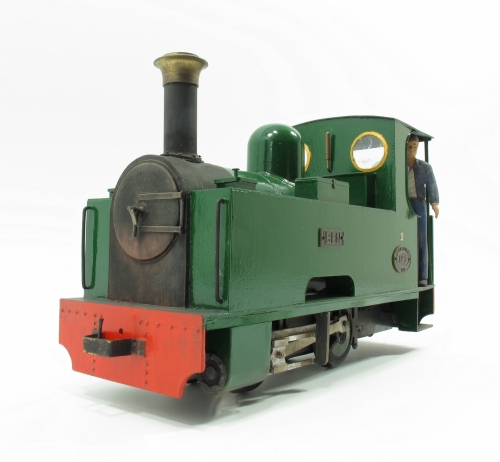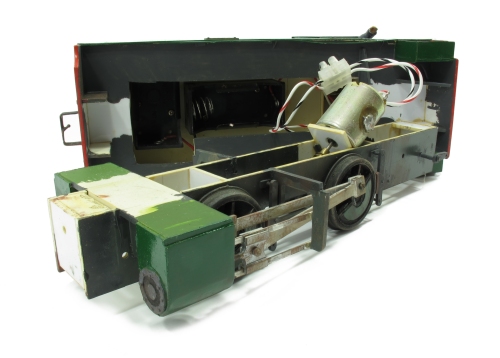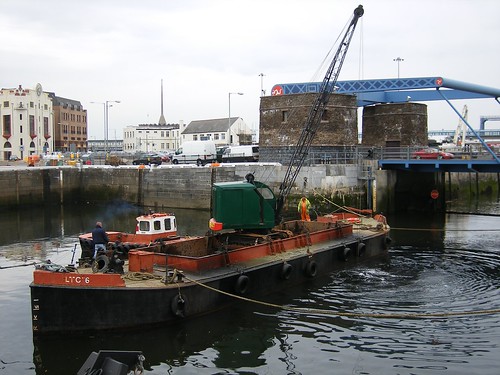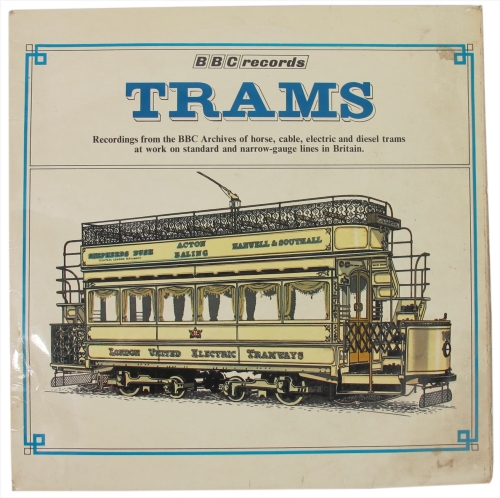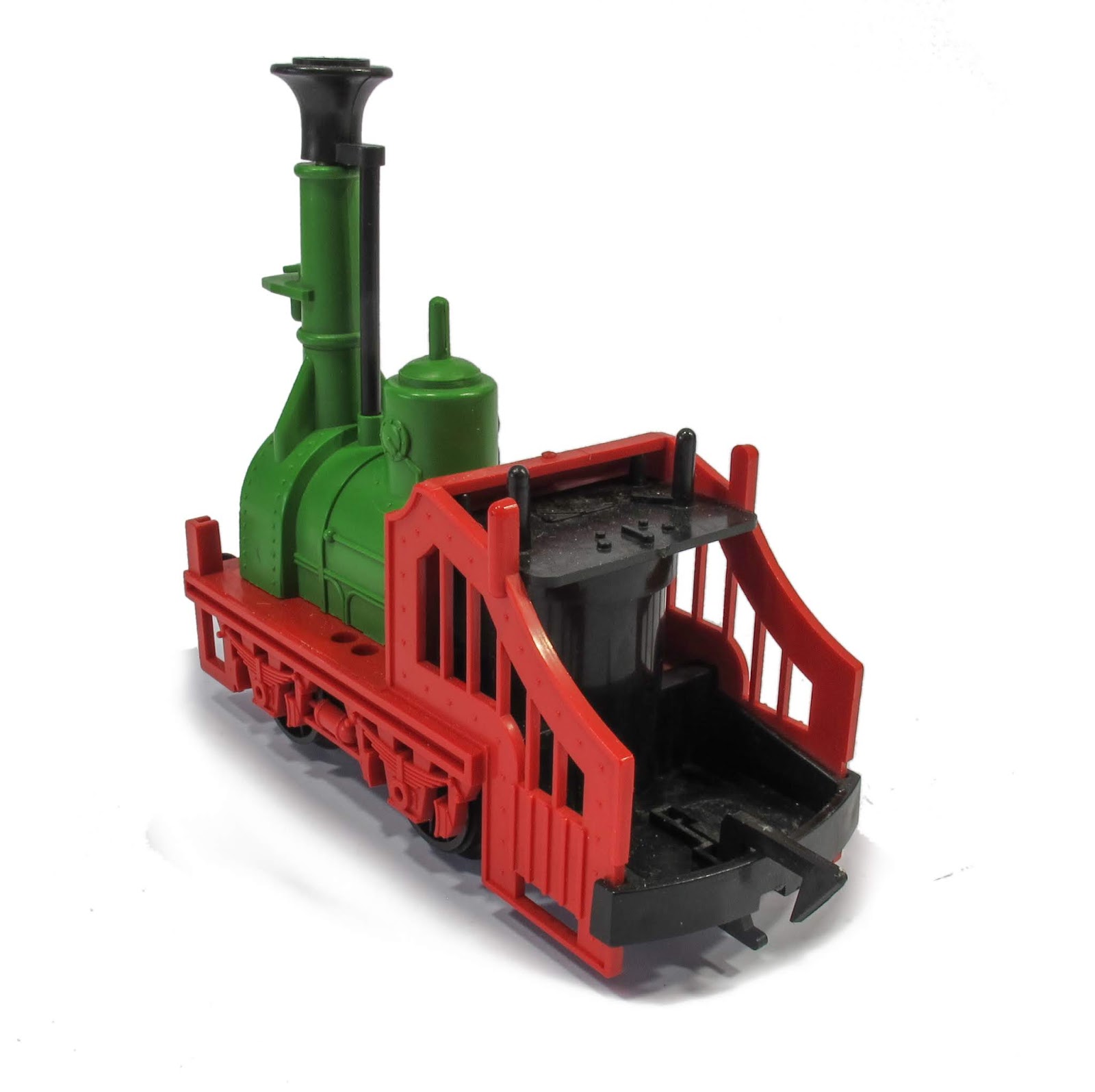A daily updated blog typed by someone with painty hands, oil under his fingernails and the smell of solder in his nostrils who likes making all sort of models and miniatures. And fixing things.
Tuesday, June 30, 2020
On a bed of Milliput
Monday, June 29, 2020
Waggle that rudder
Sunday, June 28, 2020
Ferness Quay
Saturday, June 27, 2020
Saturday Film Club: The British era at Volkswagen from 1945 to 1949
Friday, June 26, 2020
Ben
Thursday, June 25, 2020
A win for hoarding
Wednesday, June 24, 2020
Waterborne Wednesday: LTC 6
Tuesday, June 23, 2020
First float
Monday, June 22, 2020
Fiddly steering linkage
Sunday, June 21, 2020
Curating my bookshelves
Saturday, June 20, 2020
Saturday Film Club: Seaspeed
Friday, June 19, 2020
Shuttles, stone and card modelling in BRM
Thursday, June 18, 2020
Garden Rail - July 2020
Lockdown is the perfect time to dig those old kits out of the cupboard and get them on the workbench.
Eric Londesbrough fights a small signal cabin that dates from the 1980s but manages to produce a lovely little model that would be perfect for any small line. The Editor goes back to his youth with a Saltford Models Simplex diesel and after many years in our hobby, Dave Skertchly finally gets his hands on a Tri-ang “Big-Big” diesel to bash into a steam locomotive.
We're not just looking back though – John Rogers is controlling his locos with a mobile phone via Bluetooth. Kitbuilders will enjoy the second part of Mark Thatcher's church build and David Rhodes completing a rake of coaches with a modified IP Engineering kit.
Layout inspiration this month comes with a visit to The Aston Railway and Tramway, built by Mick Eastough. It might have taken 50 years to get started, but the wait was worth it as his lovely 7/8
Wednesday, June 17, 2020
Waterborne Wednesday: No Berth
Tuesday, June 16, 2020
Will the prop fit?
Monday, June 15, 2020
Lindberg Line Tug Boat kit
Sunday, June 14, 2020
Upgrading the photo studio
Saturday, June 13, 2020
Saturday Film Club: Draw a Bord Na Mona locomotive
Friday, June 12, 2020
Trams LP
Thursday, June 11, 2020
Lockdown Project: Fix the APT
Wednesday, June 10, 2020
Waterborne Wednesday: (At)Lantic Bay

Spotted in Peel harbour back in 2008, this is the Atlantic Bay dredging away.
The business end seems to be a fairly conventional digger parked on the deck. It grabs a bucket-load of the seabed and dumps it in the hold. Presumably, there is then a way of discharging this out at sea. Surely they don't dig it back out again?
I've always been confused about how they know they have dug the entire bed. The ropes fore and aft tied to the quayside I assume act to position the vessel accurately, a bit like the mechanism that moves the print head in my inkjet. Maybe it doesn't matter if you get everything as the movement of the tides will re-distribute the silt, filling holes and flattening mounds.
Tuesday, June 09, 2020
Mending the Mini-Train
The solvent quickly restored the parts, but not perfectly. Not enough for a collector, but fine for someone happy to do a bit of filling and planning a repaint.
A bigger problem is that even when loaded with a fresh C-Cell, the motor didn't spin.
Taking the model apart by undoing a single cross-head screw underneath and then wiggling the red frame clear, exposing the motor. It's a horribly cheap one and I was confident I had a suitable replacement in stock somewhere.
With this in mind, I desoldered the wires and peeled back the retailing tabs on the plastic end. Carefully pulling it away, I could see that the commutator and brushes were covered in sticky goo. My guess is some grease that has solidified, but it looked capable of stopping electricity.
Wiping everything clean with a bit of kitchen towel soaked in WD40 did the job. A quick polish with a fibreglass pencil and all seemed well.
After reassembly, the motor was rigged up to some power via flyleads and slowly turned. After a few seconds, it speed up and ran sweetly. A little oil on the bearings and everything seems fine.
Back in the loco, there was a little fiddling with the contacts in the switch, which is underneath the loco, and I have a working model. This sort of "toy" is pretty simple and easy for the amateur to fiddle with so it's always worth having a go.
My plans now involve fitting a more convenient switch and detailing the body. To which end, a big order for bits has been placed, but I may have to wait a bit for delivery.
Monday, June 08, 2020
Faller Mini-Playtrain
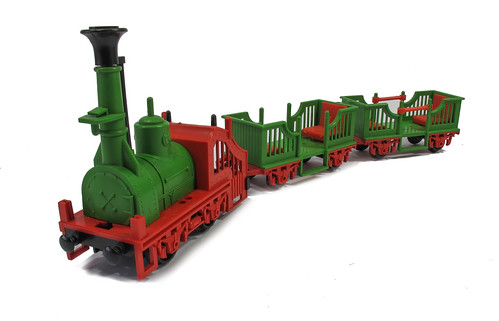
However, it's the loco that interests me.
So, my plan is to take this non-working (that's why it was cheap on eBay) model and make it into an amusement part loco. A 16mm figure will stand on the footplate OK. Get the right one and even the tension lock coupling will work, but that will be replaced with a more conventional 16mm thing.
I'll scrape some detail off and replace it. The "smokebox" will need to go black for authenticity, but I'll keep the green and red bits, although they will be painted too.
Silly, but my kind of silly.
Sunday, June 07, 2020
The book is back!
Saturday, June 06, 2020
Saturday Film Club: Thunderbirds reunion
Friday, June 05, 2020
Mystery Fowler
The model is 105mm long. On the gaudy orange chassis, all we have is "Fowler Steam wagon 1927" but no makers mark.
The cab is riveted on, but the load bed attaches with screws which suggests that alternatives were available.
Can anyone tell me more?
Thursday, June 04, 2020
Smoked glass
Where this idea came from I forget, but in the end, I just set some black cardboard back a few millimetres behind the window as I always do. It works and meant I didn't need to hang around auto shops trying to find someone to pimp my building.
The idea didn't go away though, and since I had a spare side, rejected for wonky glazing bars, when I happened across a spray can of Humbrol Clear Smoke, I decided this would be nearly as good. Quite a bit cheaper too as the can only cost me a quid.
Paint was applied to the back of the windows and you know what? It looks rubbish.
The blackness is too close to the glass and just looks wrong. My normal method is the better one. At least I know now.
Wednesday, June 03, 2020
Waterborne Wednesday: Walk around a Severn lifeboat
Fresh from the RNLI, a walk around a Severn Class Lifeboat.
Click here to go aboard. Loads of great modelling detail if you are building a RC model or perhaps the Airfix kit.
Tuesday, June 02, 2020
Cutting frames
One advance since the plans for La Passagere was filed away is the silhouette cutter. What better way to produce frames than transfer the plans to the computer and let the machine do the work?
I scanned all the drawings in and then re-drew them in the cutting software. While doing this I decided to make the model a bit bigger - the original version seemed to be an exercise in micro-modelling and when it comes to boats, this just means loads of messing around minimising and distributing weight. Technically interesting maybe, but I can't get excited about it. You also end up with a model that can only sail when the weather is perfectly calm.
Stuff that, I'll just it bigger.
Drawing out the bits was interesting as the beezer curve tool isn't like the one I'm familiar with in Paintshop Pro. They work in sort of the same way, but not exactly the same. Still, I managed.
All the bits were cut in 1mm plastic. I made all of them twice so they could be laminated up to get some thickness and (hopefully) strength. The cutter won't go all the way through, but it cuts enough of a groove to make final cutting with a knife easy.
One lesson learned is that when drawing something like a frame that should be mirrored around the centre, draw half of it and mirror. Don't rely on the original drawing you are copying being accurate. One frame wasn't, although fixing this didn't turn out to be too difficult.
Monday, June 01, 2020
La Passagere
Digging through the photos recovered from a hard drive crash years ago, I spotted this shot of a tine ferry that I suspect I took at a model boat show over a decade ago.
It reminded me that I'd really fancies this as a project and somehow, via a kind person on-line, ended up with a photocopy of the French edition os RC Marine back in 2007 where the model's build was described.
The article, which included plans was filed away and I did nothing with it, but now I fancied a go.
Digging around on the web, it seems that La Passagere is a real boat, but one that is somewhat longer than the model suggests.
Not to worry, I fancy a "messing around with Plastikard" type project right now and this looks like it should fit on the workbench very nicely.




